Whether we’re whipping up an easy elegant dessert or crafting cupcakes for a school birthday, we’ve been opening up boxes of cake mixes for decades. Since its inception in the 30s, some cake mix flavors have stayed with us throughout the years (like vanilla, devils food, and strawberry), but many have come and gone and unfortunately never returned. Here are just a few of the odder cake mixes that definitely need to have a comeback.
Black Walnut
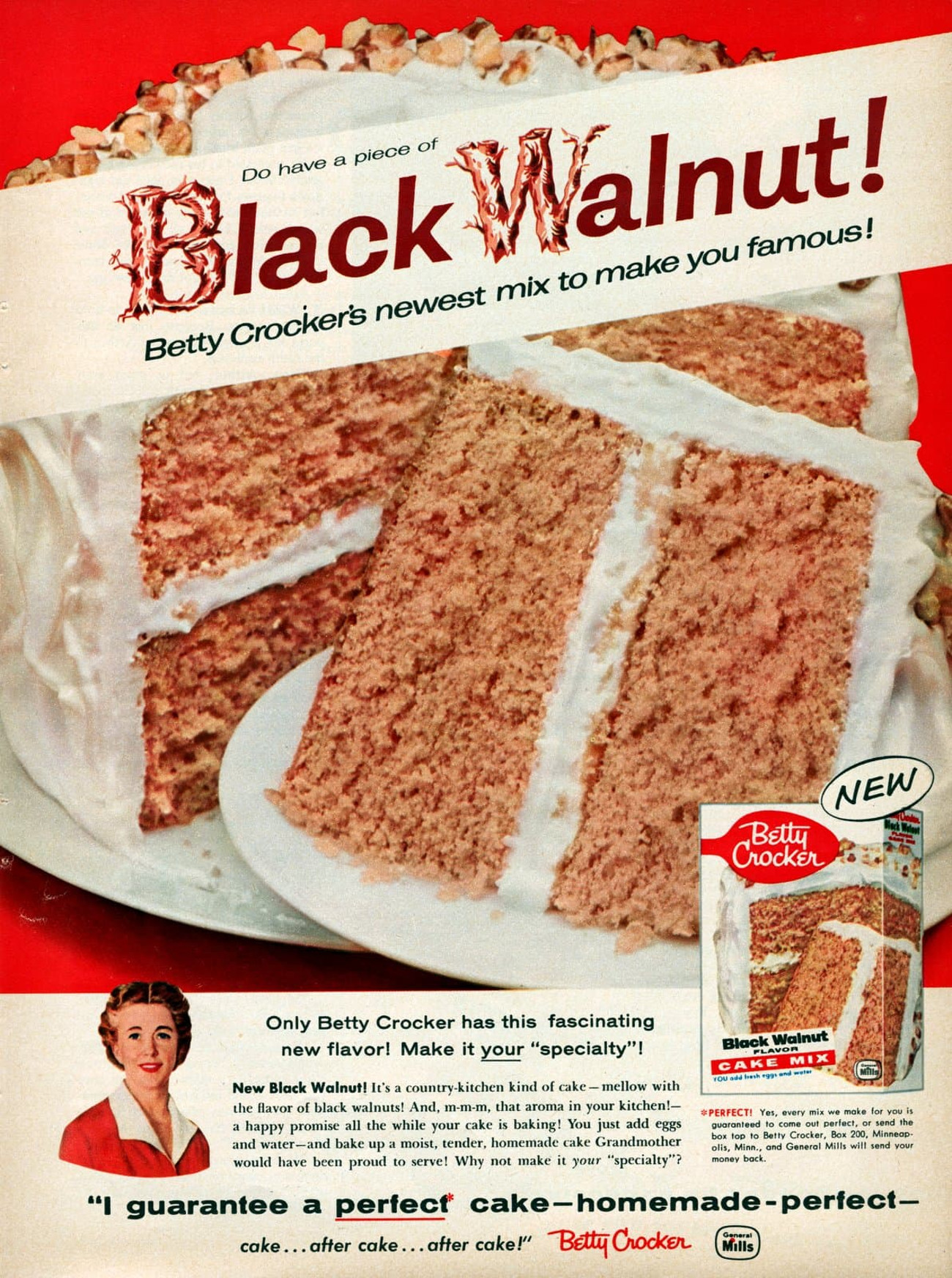
Popular in the Midwest, this offshoot of walnut has none of the buttery flavors we usually associate with walnuts and more of a mellow earthy taste. With a hard-to-crack shell and a more labor-intensive process, black walnut flavoring was seen as unique, and for a while, Betty Crocker picked up on this flavor. In production for a few years during the 1950s the black walnut cake was advertised as a country specialty that mirrored the homemade versions from grandmothers’ kitchens.
Pink Lemonade Angel Food
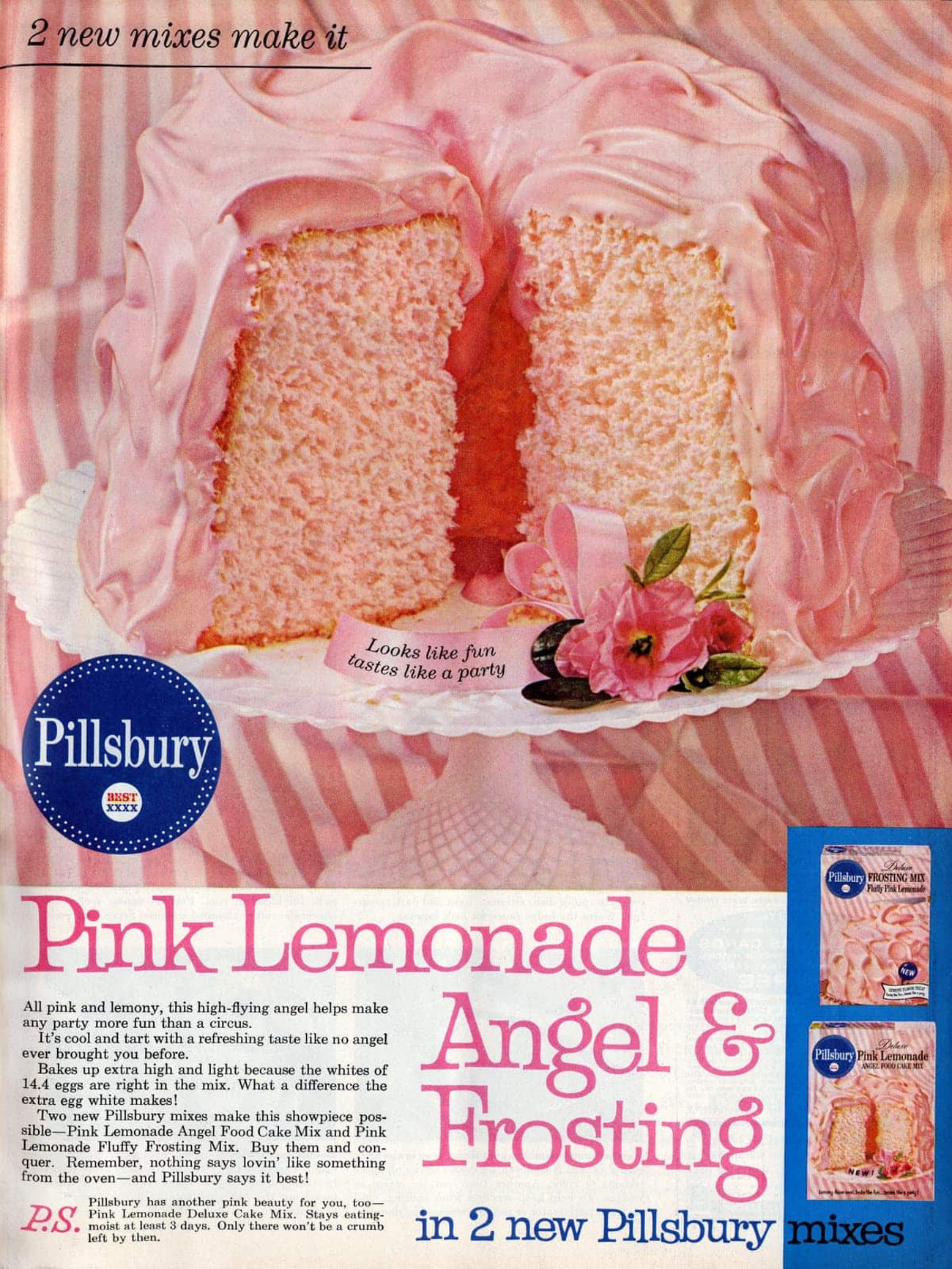
That weird pink cousin of classic lemonade got a cake mix debut in 1961. Pillsbury released this tangy-sweet flavor in angel cake form for a perfect light summertime treat. Though pink lemonade has made comebacks in a classic cake form, the first airy angel cake has the perfect texture for this pretty pink flavor.
Old English Toffee Swirl
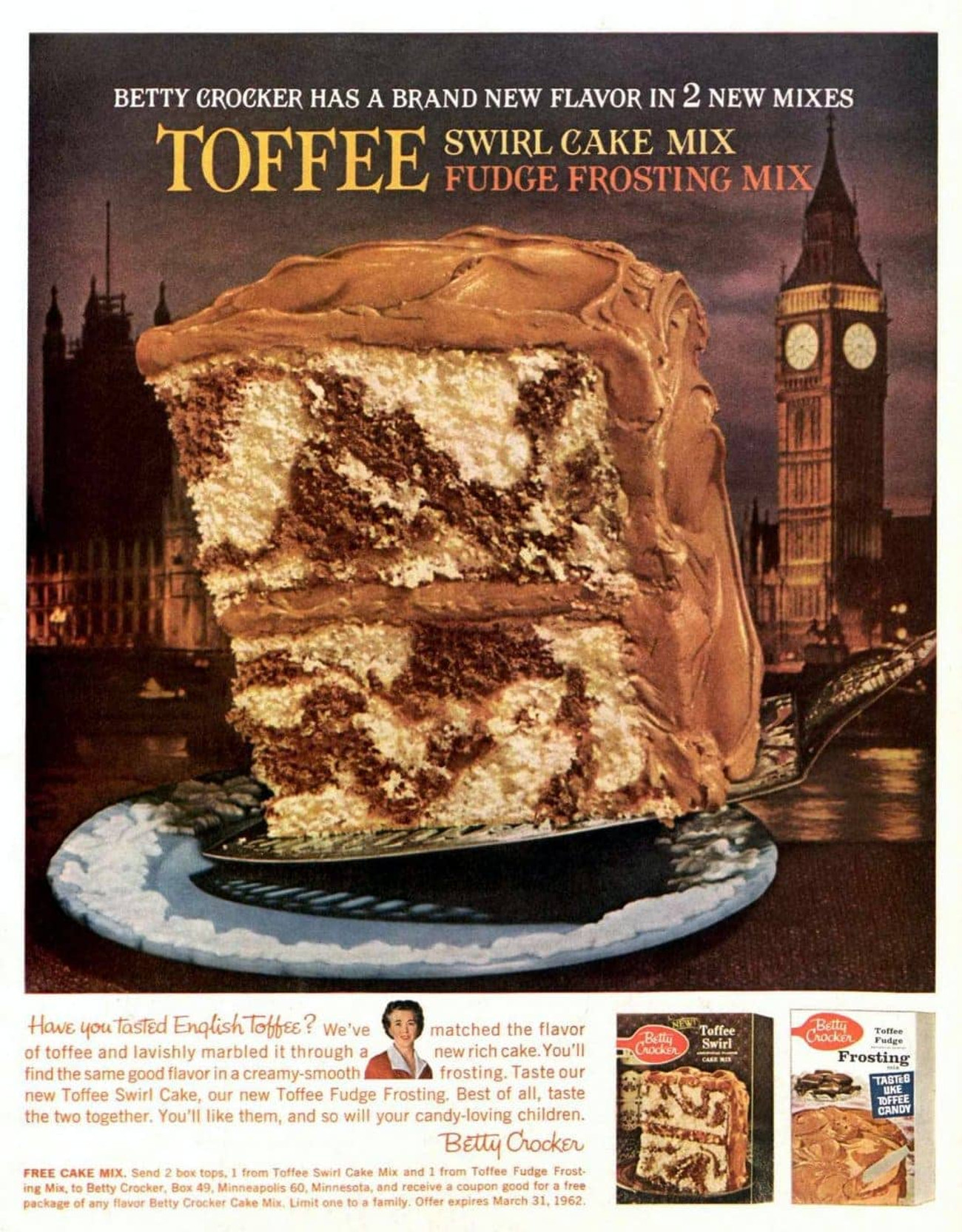
The classic candy from England was turned into a cake flavor by Betty Crocker in the early 1960s. Pairing sweet toffee and rich chocolate doesn’t seem out of place, in fact, we have tons of chocolate toffee flavored desserts, why the flavor flopped is beyond me certainly, because it would be popular even today.
Orange
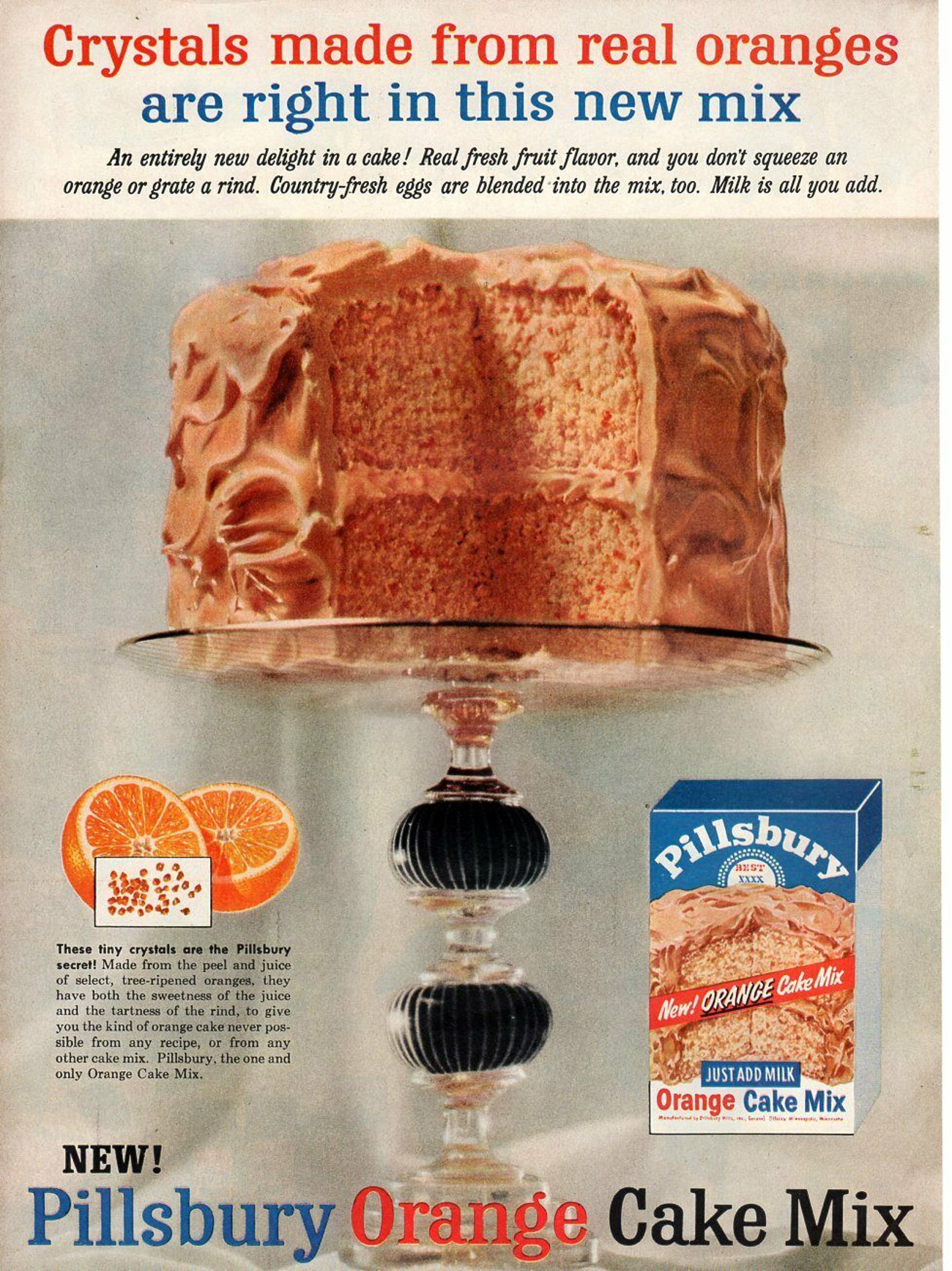
Surprisingly, companies haven’t dabbled with orange cake mix flavor since the 20th-century. The possibilities for flavor pairings are long — thick fluffy layers of vanilla frosting make a creamsicle cake, or partner orange cake with chocolate to create a spin on the Christmastime chocolate-covered orange, or paired with strawberry frosting for the ultimate tropical cake. There’s no precise answer as to why this Pillsbury cake mix flavor struggled to be in production from the 50s through the 60s, but it probably has to do with the fact that orange flavoring can taste artificial, almost medicinal.
Banana Sundae
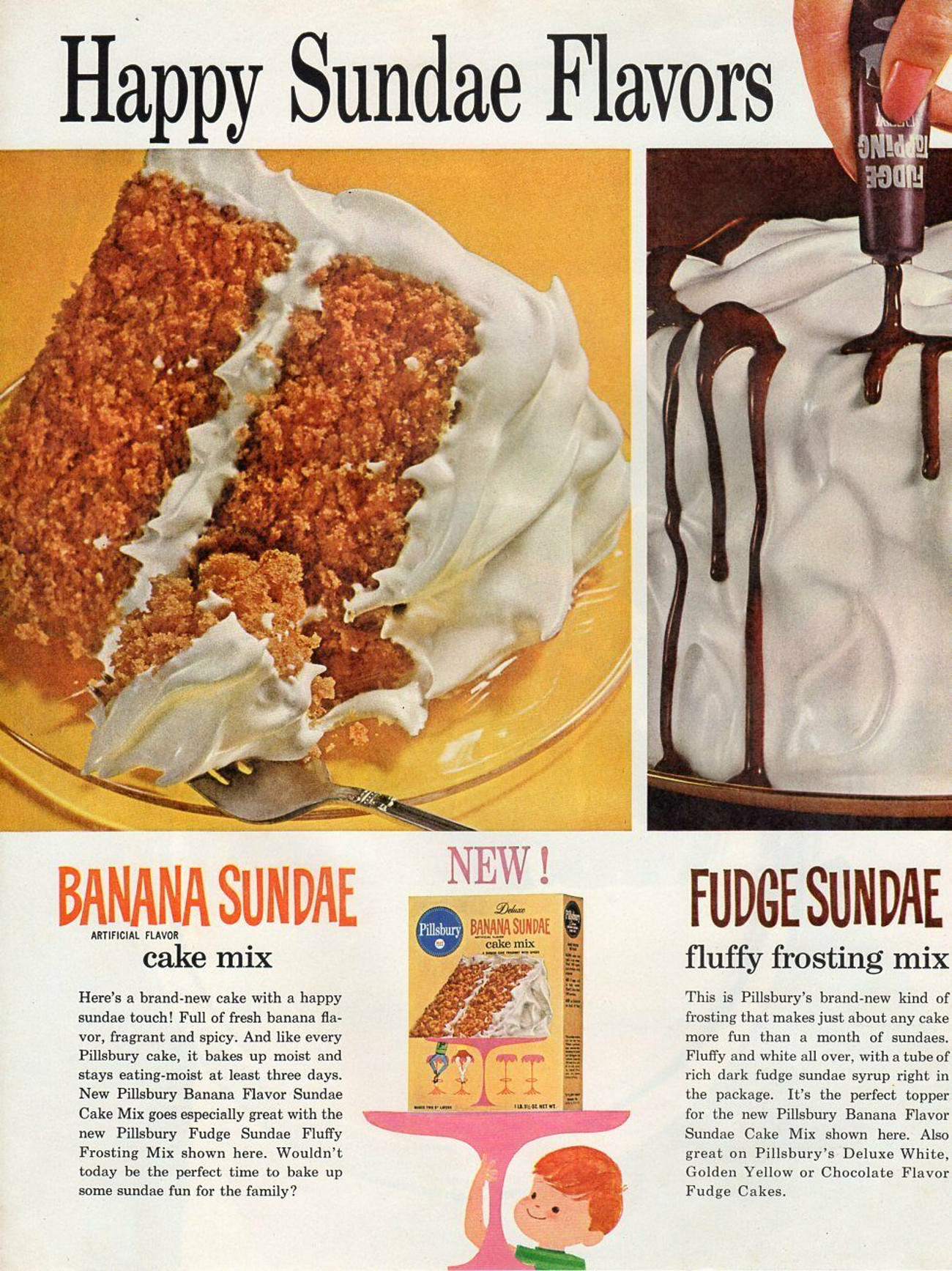
It’s hard to know the difference in flavors between banana and banana sundae, but adding the word sundae to anything evokes a sense of that classic summertime ice cream treat that everyone loves. How the banana sundae cake mix was advertised sounds downright delicious, with whipped vanilla frosting and dripping chocolate drizzle, the only thing one can conclude is that using banana flavoring can be off-putting. Adding a banana to a spice cake mix gives a more natural banana taste and the cost to produce a banana specific cake wasn’t worth the company’s time.
Burnt Sugar

Using boiled-down granulated sugar creates a deeper caramelization and it’s the base for many old-fashioned candies and for a short time, this northeast sweet staple was made into a cake mix as well. Duncan Hines evoked the themes of old New England villages adorned with maple trees to sell this new flavor, but the cake mix flavor didn’t seem to survive the decades. Maybe today companies could capture that mapley, burnt sugar taste without making the flavor too sweet, but back in the day, it may have been harder to achieve this nuanced burnt sugar flavor.
Early American Collection
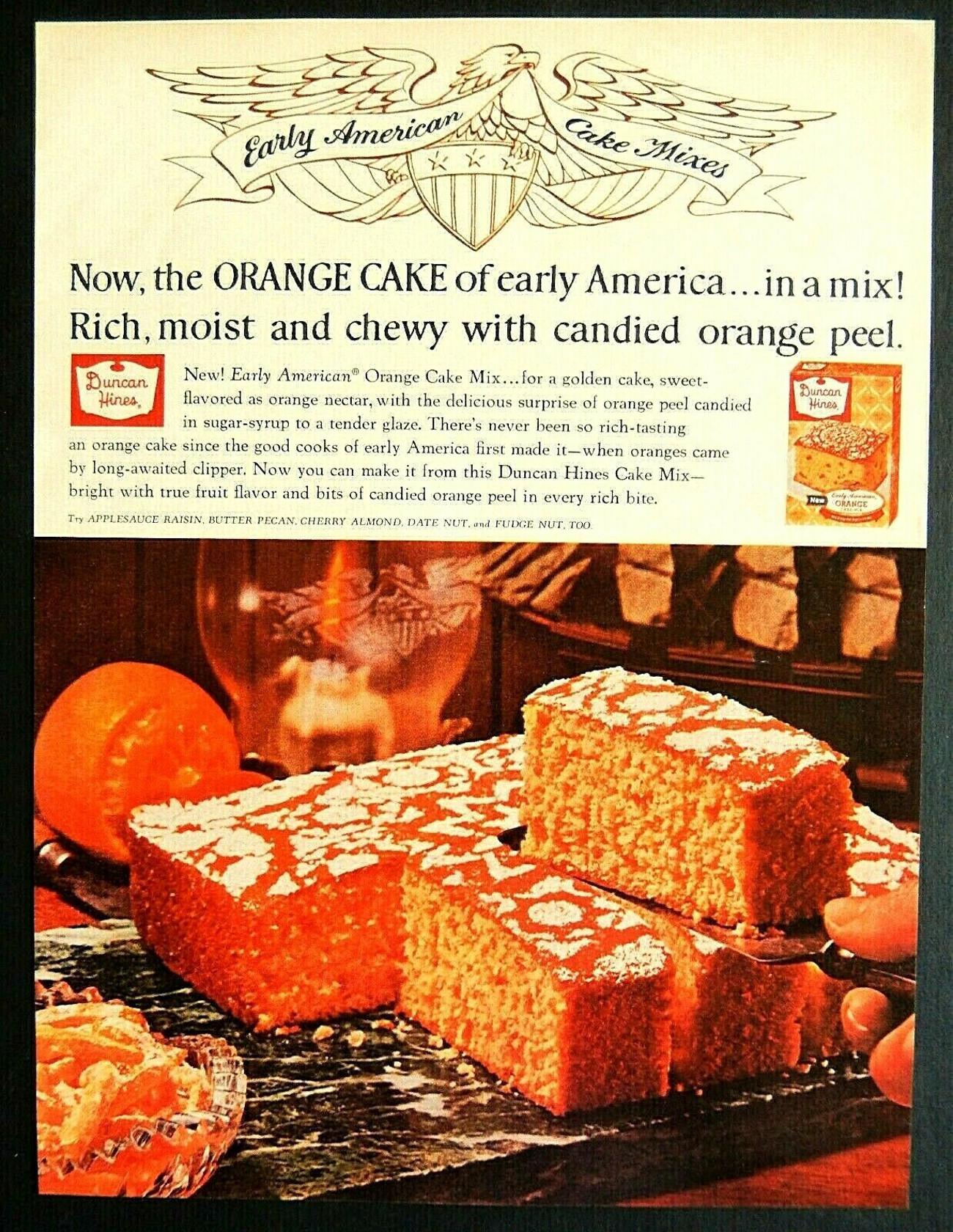
Yesteryear marketing really does work, at least that is what Duncan Hines thought when they released a cake mix series of early Americana flavors. The cake in the advertisement is candied orange peel, but they released other colonial-themed flavors like date nut, applesauce raisin, butter pecan, cherry, almond, and fudge nut. Though some of these flavors are a little too specific, flavors like almond or fudge nut (chocolate with chopped nuts) would still be popular even today. It probably goes to assume that most people can simply add almond extract into a vanilla cake, candy peels or applesauce into a spice cake, or nuts into a chocolate cake, but the flavors don’t seem dated at all, this series of cake mixes has a warm palate that would be perfect during the fall season.
Peanut Butter

America’s love of peanut butter-flavored anything was just as strong in the 20th-century as it is today, which is why it’s hard to believe that a peanut butter-flavored cake mix would be decommissioned. Maybe the flavor of peanut butter wasn’t strong, or the cake mix was dry (sometimes adding peanut butter without changing the ratios can zap out the moisture from baked goods), how this cake mix flavor tasted, we’ll never know. Nowadays, most people add peanut butter to a white or yellow cake, but a peanut butter flavored cake sounds like a delicious treat, especially with fudgy chocolate frosting.
Coffee Cinnamon

Betty Crocker was onto something back then with this combination. Surely, they were trying to mimic those flavors of a breakfast crumb cake or a snacking cake, but coffee and cinnamon sound like the perfect break drink combo, even the café culture wasn’t a thought in the developers’ eyes. When not balanced well, coffee and cinnamon can taste astringent and dry the mouth, so if the ratios were off, it certainly would have tasted unpleasant. We can only hope that this flavor makes a comeback, it sounds like the base of a cappuccino cake to me!
Out of all of these cake mixes, do you think any of these can become full-fledged sellable flavors again?













